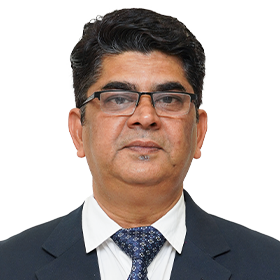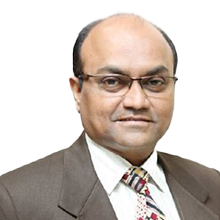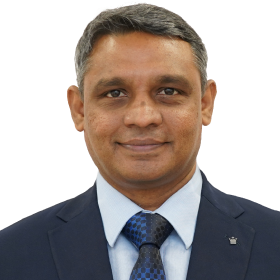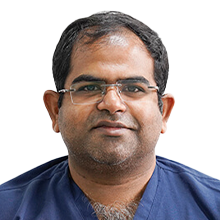Why Choose Yashoda Hospitals for Septoplasty?
Yashoda Hospitals offers advanced septoplasty procedures for deviated nasal septum and nasal blockages with personalized care and cutting-edge techniques.
01.
Leading Surgical Center
Yashoda Hospitals is recognized as the Best Hospital for Septoplasty in Hyderabad, offering exceptional septoplasty services.
02.
Expert Ear-Nose-Throat (ENT) Specialist
Our highly experienced surgical team specializes in performing advanced septoplasty operations, ensuring optimal outcomes for all patients.
03.
Cutting-edge Facilities
Equipped with state-of-the-art technology and advanced medical equipment, our facility provides the perfect setting for precise and accurate septoplasty services.
04.
Dedicated Surgical Care
Our dedicated plastic surgeons and ENT specialists are committed to guiding you through every step in a highly effective way to treat nasal septum abnormalities.
Septoplasty is a surgical procedure to correct a deviated septum, enhancing airflow and breathing. It’s typically an outpatient procedure, allowing patients to return home the same day. Recovery can take up to three months. Common in otorhinolaryngology and plastic surgery, it addresses significant nasal airway obstruction, often alongside rhinoplasty or turbinoplasty.
The septum, comprising cartilage and bone, divides the nose, but deviation can block airflow, often due to birth or injury. Surgeons perform septoplasty to treat sinusitis, remove polyps, and prevent nosebleeds, guided by whether it’s endoscopic or open.
The surgeon’s recommendations dictate whether septoplasty can be performed as an endoscopic septoplasty or an open septoplasty.
| Procedure Name | Septoplasty |
|---|---|
| Type of Surgery | Endoscopic, open or closed septoplasty |
| Type of Anesthesia | General Anesthesia |
| Procedure Duration | 30 minutes to 90 minutes |
| Recovery Duration | Few weeks to few months |
Septoplasty: Pre-Op & Post-Op Care
Preparation: Before a septoplasty, a surgeon reviews the patient’s medical history, checks the skin and nose, and may request blood tests and make some assessments. Oral blood-thinning medications are advised to be stopped up to a week before surgery. General anesthesia is used prior to the surgery.
During the surgery: A surgeon makes an incision to access the septum, lifts the mucous membrane, moves the deviated septum into the correct position, removes barriers, and repositions the mucous membrane, and finally stitches are made to secure the septum and membrane in place.
After the surgery: A septoplasty procedure may require stitches to secure the septum and membrane, but cotton packing can sometimes be enough to hold it. Septoplasty is typically an outpatient procedure, allowing patients to return home the same day as the procedure, unless significant complications occur.
Septoplasty recovery: The initial recovery from a septoplasty typically lasts about a week, with the overall healing of the bone and cartilage taking several months to a year. Post-procedure, expect swelling, bleeding, and congestion, which could be resolved over 2 weeks.
Post-procedure care: After surgery, one should rest for several days, resume light activities, avoid strenuous physical activity for one month, avoid nose blowing, sneeze open, avoid splints, and resume a normal diet if cleared by the surgeon.
Benefits of Septoplasty at Yashoda Hospitals
- Effective Repair: Our comprehensive evaluation and personalized treatment plans ensure effective septoplasty for the eligible patients.
- Experienced Ear-Nose-Throat (ENT) Specialists & Plastic Surgeons: With years of experience, our skilled ENT specialists perform septoplasty procedures with precision and expertise.
- Efficient Care: We strive to provide timely diagnosis and prompt initiation of treatment strategies, ensuring efficient care and optimal outcomes.






























 Appointment
Appointment WhatsApp
WhatsApp Call
Call More
More

